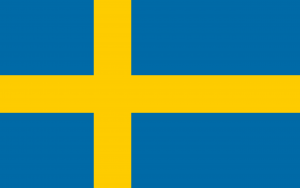Language/Swedish/Grammar/Definite-and-indefinite-nouns
 Հայերէն
Հայերէն Български език
Български език 官话
官话 官話
官話 Hrvatski jezik
Hrvatski jezik Český jazyk
Český jazyk Nederlands
Nederlands English
English Suomen kieli
Suomen kieli Français
Français Deutsch
Deutsch עברית
עברית हिन्दी
हिन्दी Magyar
Magyar Bahasa Indonesia
Bahasa Indonesia فارسی
فارسی Italiano
Italiano 日本語
日本語 Қазақ тілі
Қазақ тілі 한국어
한국어 Lietuvių kalba
Lietuvių kalba Νέα Ελληνικά
Νέα Ελληνικά Şimali Azərbaycanlılar
Şimali Azərbaycanlılar Język polski
Język polski Português
Português Limba Română
Limba Română Русский язык
Русский язык Српски
Српски Español
Español العربية القياسية
العربية القياسية Wikang Tagalog
Wikang Tagalog தமிழ்
தமிழ் ภาษาไทย
ภาษาไทย Türkçe
Türkçe Українська мова
Українська мова Urdu
Urdu Tiếng Việt
Tiếng ViệtIn this lesson, you will learn about the difference between definite and indefinite nouns in Swedish and how to use them in sentences.
Definite articles
In Swedish, definite articles are used to specify a particular noun. There is only one definite article in Swedish which is "den" for common gender nouns and "det" for neuter gender nouns. The definite article for plural nouns is "de".
Common gender nouns
For common gender nouns, the definite article "den" is added before the noun. The definite article takes different endings depending on the gender of the noun.
The endings for common gender definite articles are:
- -en for singular definite
- -n for singular definite, if the noun ends with a vowel or a vowel sound
- -erna for plural definite
Below are some examples:
| Swedish | Pronunciation | English | |||
|---|---|---|---|---|---|
| en bil | ['beːl] | a car | den bilen | ['beːlen] | the car |
| en flicka | ['flɪk:a] | a girl | flickan | ['flɪkan] | the girl |
| en katt | ['kat:] | a cat | katten | ['katen] | the cat |
Neuter gender nouns
For neuter gender nouns, the definite article "det" is added before the noun. Neuter gender definite articles only have one ending which is "-et".
Below are some examples:
| Swedish | Pronunciation | English | |||
|---|---|---|---|---|---|
| ett äpple | [ɛt ˈɛpː.lɛ] | an apple | äpplet | [ɛpː.lɛt] | the apple |
| ett bord | [ɛt boːr:d] | a table | bordet | [boːr:dɛt] | the table |
| ett ägg | [ɛt ɛɡː] | an egg | ägget | [ɛɡːɛt] | the egg |
Plural nouns
For plural nouns, the definite article "de" is added before the noun. The plural definite article only has one ending which is "-na".
Below are some examples:
| Swedish | Pronunciation | English | |||
|---|---|---|---|---|---|
| hundar | ['hɵnːdar] | dogs | hundarna | ['hɵnːdarna] | the dogs |
| bilar | ['biːlar] | cars | bilarna | ['biːlarna] | the cars |
| elever | [ɛ'lɛver] | pupils | eleverna | [ɛ'lɛverna] | the pupils |
Indefinite articles
In Swedish, indefinite articles are used to refer to a non-specific noun. Swedish has two indefinite articles depending on the gender of the noun: "en" for common gender nouns and "ett" for neuter gender nouns. There is no indefinite article for plural nouns.
Below are some examples:
| Swedish | Pronunciation | English | |||||||||
|---|---|---|---|---|---|---|---|---|---|---|---|
| en bil | ['beːl] | a car | ett äpple | [ɛt ˈɛpː.lɛ] | an apple | en flicka | ['flɪk:a] | a girl | ett bord | [ɛt boːr:d] | a table |
Summary
- Definite articles are used to specify a particular noun in Swedish. - Indefinite articles are used to refer to a non-specific noun in Swedish. - The definite article for common gender nouns is "den". - The definite article for neuter gender nouns is "det". - The definite article for plural nouns is "de". - The indefinite article for common gender nouns is "en". - The indefinite article for neuter gender nouns is "ett".
Exercises
- Translate the following phrases into Swedish:
- A dog –
- The cat -
- Some apples–
- The boys –
- A table –

